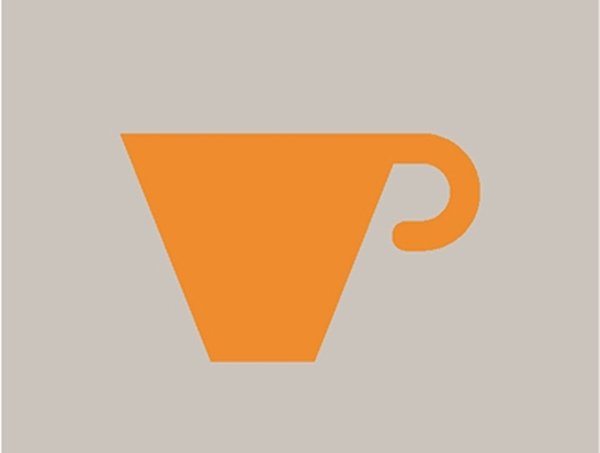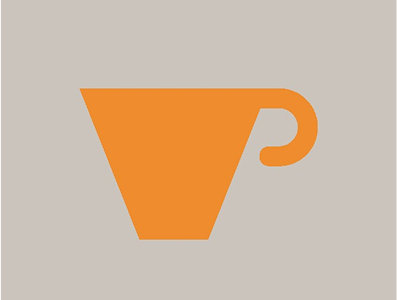
The John Lewis Partnership and our two brands, Waitrose and John Lewis, have been serving communities across the UK for more than 100 years. Our brands are synonymous with quality, value and exceptional service.
We’re bringing this trusted reputation to a new area - rental homes - to offer residents a housing experience that will meet the demand for greater standards of quality and care.
Our ambition is to turn the UK’s private rental homes sector into something a little more personal – with great service at its core, and residents treated as customers, not just tenants.
So we’ve created a business to build and operate purpose-built rental-only homes, so called ‘Build-to-Rent’ housing.
We want to transform our underused spaces into vibrant, sustainable communities that combine the convenience of shared areas and modern amenities with the safety, energy efficiency, and high-quality design that help make a home.
These properties will be designed for renters with communal areas for fitness, home-working and socialising. They will include a range of John Lewis furnished home sizes for individuals, couples, friends and families, managed around the clock by our Partners with the same dedication to outstanding service we provide in our stores.

Why rental homes?
Our move into rental homes is part of our plan to create a family of businesses that complement each other.
Like many retailers who have also developed housing, we have a sizable property portfolio in locations where lots of people live and work with great transport links and local amenities.
In addition to delivering new homes with the service you would expect from our brands, it will generate new income streams that, in the long-term, will support investment back into our retail businesses, as well as helping to alleviate some of the growing pressures on the UK’s housing market.
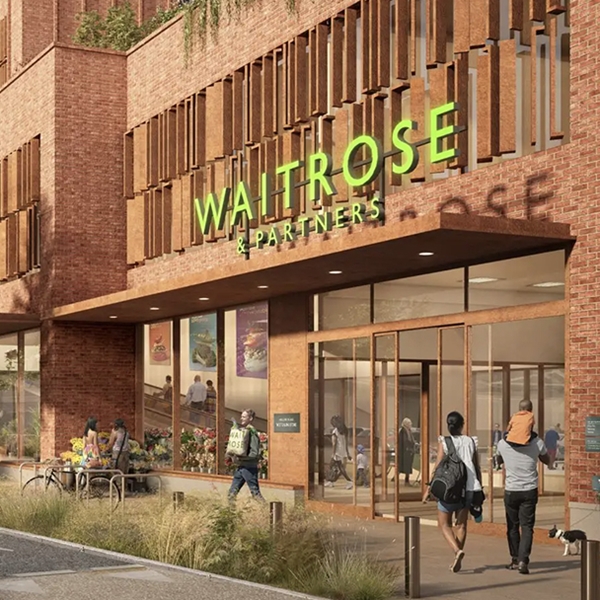
Transforming some of our supermarkets and car parks provides the opportunity to deliver professionally run, purpose-built homes for renters where there is high demand, and modernise some of our stores to create meaningful, lasting value for the communities we’ve served for many years.
Our focus on existing developed land (‘brownfield’ sites) reflects our commitment to minimising urban sprawl while optimising use of existing infrastructure, such as public transport.
The funding to build these homes will come via our partnership with aberdeen, one of the UK's largest fund managers with a heritage in residential assets spanning almost thirty years.
Alongside an experienced residential team and award-winning architects, the scale of our retail operation ensures we have an infrastructure in areas such as personnel, customer experience, marketing and procurement to help establish and grow a rental housing business.

What is build-to-rent?
The Build-to-Rent homes sector is well established outside the UK and is now growing here too. As the name suggests, Build-to-Rent homes are purely for rent, not for sale, which suits the Partnership because we want to make a long term commitment to these communities and the residents living in them.
But, unlike traditional rentals, they’re professionally managed with access to shared spaces and modern facilities that go beyond what most private rental properties offer.
Our goal is to take the concept further by integrating our ethos and particularly our commitment to service excellence.
An approach guided by over 100 years of service
Building communities that strengthen communities
We recognise the role our shops play in areas we serve and aim to ensure they do more to support their community than the shopping services we provide in store.
Our approach is no different with our developments. We want to deliver more than just homes.
They will be designed to foster a sense of community, both for the residents living there and the surrounding area too.
For residents, we want environments that they can call home, no matter how long they choose to stay. Shared spaces to work, exercise and relax with a social element. And our Partners will have the opportunity to curate events and experiences for them offered through Waitrose and John Lewis as well as the thousands of brands we work with.
In parallel, we place great importance on listening to the views of local people and organisations to help shape our plans from the outset. Our designs will look at options such as providing new public green spaces and play areas or new community rooms and commercial space, to help us make a positive contribution to local people and add to an area’s vibrancy.
At your service
We’re committed for the long-term - that means it's in our interests to construct high-quality homes that are thoughtfully designed and managed with the same commitment to high standards that we apply across our John Lewis and Waitrose stores.
We aim to create supportive environments where residents feel welcome and secure with options for long-term tenancies that encourage them to stay for as long as they want, even if their circumstances change.
Residents will always know who they’re dealing with: a trusted and recognised brand that will provide genuine customer service. Our Partners have always been our greatest asset. That’s why all our developments will be managed by a team of Partners, available 24/7 to provide responsive support and services with a commitment to residents' wellbeing.
And behind the day-to-day management are more teams of Partners across our business who’ll help however they’re needed. Whether managing complex retail, online, estate and logistics operations or providing furnishings, financial or home styling services, our expertise lends itself to establishing a comprehensive rental experience.
Our plans to build our first homes

Reading
We’ve submitted a planning application to transform our former distribution warehouse into 170 much-needed rental homes.
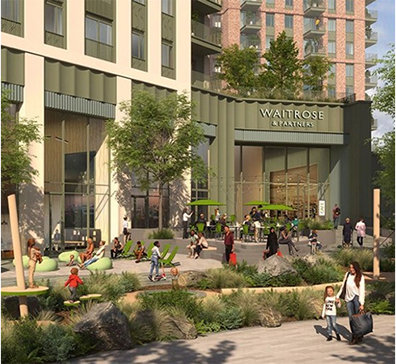
Bromley
We’ve been granted permission to transform our Waitrose site into 353 homes and a modernised store. We’re finalising agreements with the council, so we can progress the design and construction.
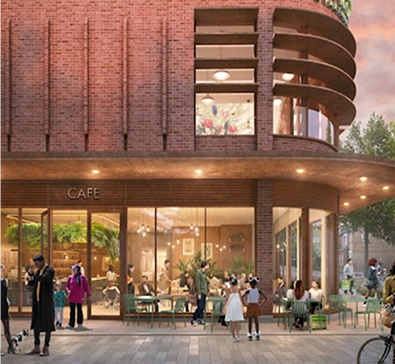
West Ealing
We have been successful in a planning appeal to create 428 homes above a new, modernised Waitrose shop.
Our first plans to build and manage homes on land from our estate will see us transform existing Partnership locations in Ealing, Bromley and Reading to offer renters nearly 1,000 convenient and high-quality homes to choose from.

Our build-to-rent operations
Alongside developing our own locations, we’ve established an operations business that already manages rental homes across three existing apartment blocks in Birmingham, Leeds and Leicester – owned by our partner, abrdn. Further locations are planned for the future.
This will help determine best practice in the way we engage with and support residents so we can apply it in those homes we will build and manage on our own land.
A team of Partners oversee the day-to-day management of the properties, with abrdn remaining responsible for the management of the building.
HomeViews, the UK’s only independent review platform for residential developments, has reported that resident satisfaction at the apartments in all three locations are performing above the UK benchmark on every metric.
Our commitments

Investors
Through our partnership with abrdn, our ambition is to establish a business that can invest institutional capital from pension funds and other long-term investors to create quality, professionally-run rental communities. We want to offer a rental experience that is more personal – with great service at its core - with residents treated as customers, not just tenants.
With homes managed by the Partnership, our developments, together with the significant pipeline of land under our ownership, will offer a strong investment opportunity in a fast-growing market. It is an opportunity to scale the provision of quality rental housing with the reassurance of being connected to the John Lewis Partnership and two of Britain’s longest-standing retail brands - Waitrose and John Lewis.
Landscape
According to residential advisors, Savills, an estimated £250bn is needed to give the people of Britain the rental housing they need this decade. Investors accessing Build-to-Rent can benefit from:













